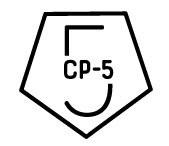
CAP Peptide 5 is a patented synthetic peptide, exclusively found in Luxfaciem Skin Renew®. It was discovered in the course of research on pathologies associated with cell damage caused by oncologic disease, and bio-technologically developed with the goal of improving skin health.
CAP Peptide 5 fights all of the pillars of ageing, generating an aggregate effect that translates into significant improvement in skin health, and a noticeable anti-ageing effect.
Over 20 years ago, a well-known group of scientists from the CSIC, began research on rare disorders and pathologies related with cell damage caused by oncologic diseases in the lungs. By chance, they discovered that there was a protein that showed relevant activity on oxidative stress, and that could repair damaged cells and revert cell damage in different organs and tissues.
The researchers realized that the sequence of this peptide was the same as a protein in the telomerase complex, with the biological function of repairing the telomere, activating cell survival and increasing the level of antioxidant enzymes that reduce oxidative stress and enable cells to remain healthy and live longer. It is the only peptide with the capacity to restore telomerase function.
Throughout life, skin cells divide to replace those that have aged. In this cell division process, the length of the telomeres that protect genetic matter is shortened, giving rise to the degeneration and death of skin cells. Telomere length is directly proportional to the ageing of the cells.
In the process of ageing, either due to external factors such as UV radiation, or internal physiological factors, the skin’s oxidation level is altered, leading to the accumulation of free radicals. These are substances capable of oxidizing proteins and other molecules, altering their natural, healthy function.
With age, skin loses its elasticity due to deficiencies in the composition of collagen and elastin, proteins that are key to keeping skin young and moisturized. Marked effects on the depth and size of wrinkles are directly related with this process.
An increase in the concentration of beta-galactosidase (b-Gal) occurs as cells age. An increase of b-Gal is associated with dysfunction or deficient function of cellular lysosomes (organelles containing important enzymes that regulate a number of cellular processes). B-Gal is considered an important senescence marker.
Skin is a tissue in constant cellular renewal. The development and differentiation of skin cells originates with pluripotent stem cells found in the deep layers of the skin. As skin ages, the number of stem cells diminishes.
Following these studies and discovery of the benefits of CAP Peptide 5 for cellular damage repair and reversion, the idea emerged to use this active ingredient in the prevention and protection of the body’s largest organ, skin, which is subject to constant aggressions that cause extreme cellular damage and consequently, skin ageing.